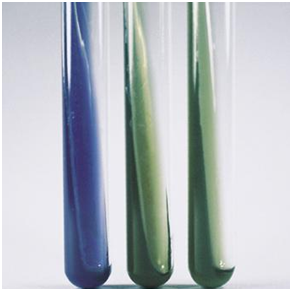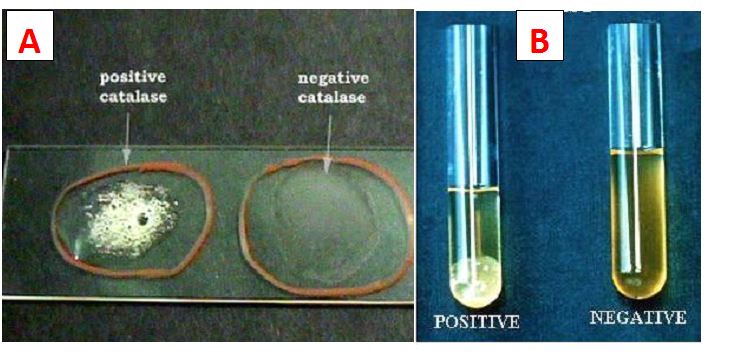Citrate test is used to identify Enterobacteriaceae that utilize citrate or citric acid as their sole carbon and energy source. Simmon’s citrate agar or citrate tablet is used in performing this test but only the Simmon’s citrate agar method is expanded in this book.
The Simmons citrate agar tests the ability of organisms to utilize citrate as a sole carbon source. Simmons citrate agar contains sodium citrate as the sole source of carbon; and ammonium dihydrogen phosphate as the sole source of nitrogen, and other nutrients required for the microbial growth.
The pH indicator in the Simmons citrate agar is called bromothymol blue. The test organism produces the enzyme, citritase which breaks down citrate to oxaloacetate and acetate. Citrate positive enterobacteria grow on citrate agar slants or medium.
Enterobacteria that do not require citrate as carbon or energy source (i.e. citrate negative bacteria) do not grow on citrate agar medium. Simmon’s citrate agar medium contains a pH indicator called bromothymol blue which changes colour to blue when bacteria that utilize citrate starts growing on it upon inoculation.
The medium changes from green to blue, and this indicates a positive result. Klebsiella pneumoniae and Proteus mirabilis are typical citrate positive organisms.
PROCEDURE FOR CITRATE TEST
- Prepare Simmon’s citrate agar slant according to manufacturer’s instruction. In the preparation, test tubes containing the citrate medium must be kept in slanting position in order to make a slope. A well prepared Simmon’s citrate medium looks greenish.
- Inoculate the slant by streaking the slope with a speck or loopful of the test isolate.
- Incubate inoculated tube(s) overnight at 37oC.
- Observe the tube(s) for a change in colour. A change in colour from green to blue indicates an alkaline reaction arising from citrate utilization and growth of citrate positive bacteria (Figure 1).
- The bromothymol-blue greenish colour remains unchanged when the citrate is not utilized, and this is a negative test result because the inoculated organism did not grow in the medium.

References
Basic laboratory procedures in clinical bacteriology. World Health Organization (WHO), 1991. Available from WHO publications, 1211 Geneva, 27-Switzerland.
Beers M.H., Porter R.S., Jones T.V., Kaplan J.L and Berkwits M (2006). The Merck Manual of Diagnosis and Therapy. Eighteenth edition. Merck & Co., Inc, USA.
Biosafety in Microbiological and Biomedical Laboratories. 5th edition. U.S Department of Health and Human Services. Public Health Service. Center for Disease Control and Prevention. National Institute of Health. HHS Publication No. (CDC) 21-1112.2009.
Cheesbrough M (2010). District Laboratory Practice in Tropical Countries. Part I. 2nd edition. Cambridge University Press, UK.
Cheesbrough M (2010). District Laboratory Practice in Tropical Countries. Part 2. 2nd edition. Cambridge University Press, UK.
Collins C.H, Lyne P.M, Grange J.M and Falkinham J.O (2004). Collins and Lyne’s Microbiological Methods. Eight edition. Arnold publishers, New York, USA.
Disinfection and Sterilization. (1993). Laboratory Biosafety Manual (2nd ed., pp. 60-70). Geneva: WHO.
Garcia L.S (2010). Clinical Microbiology Procedures Handbook. Third edition. American Society of Microbiology Press, USA.
Garcia L.S (2014). Clinical Laboratory Management. First edition. American Society of Microbiology Press, USA.
Fleming, D. O., Richardson, J. H., Tulis, J. I. and Vesley, D. (eds) (1995). Laboratory Safety: Principles and practice. Washington DC: ASM press.
Dubey, R. C. and Maheshwari, D. K. (2004). Practical Microbiology. S.Chand and Company LTD, New Delhi, India.
Gillespie S.H and Bamford K.B (2012). Medical Microbiology and Infection at a glance. 4th edition. Wiley-Blackwell Publishers, UK.
Discover more from #1 Microbiology Resource Hub
Subscribe to get the latest posts to your email.


